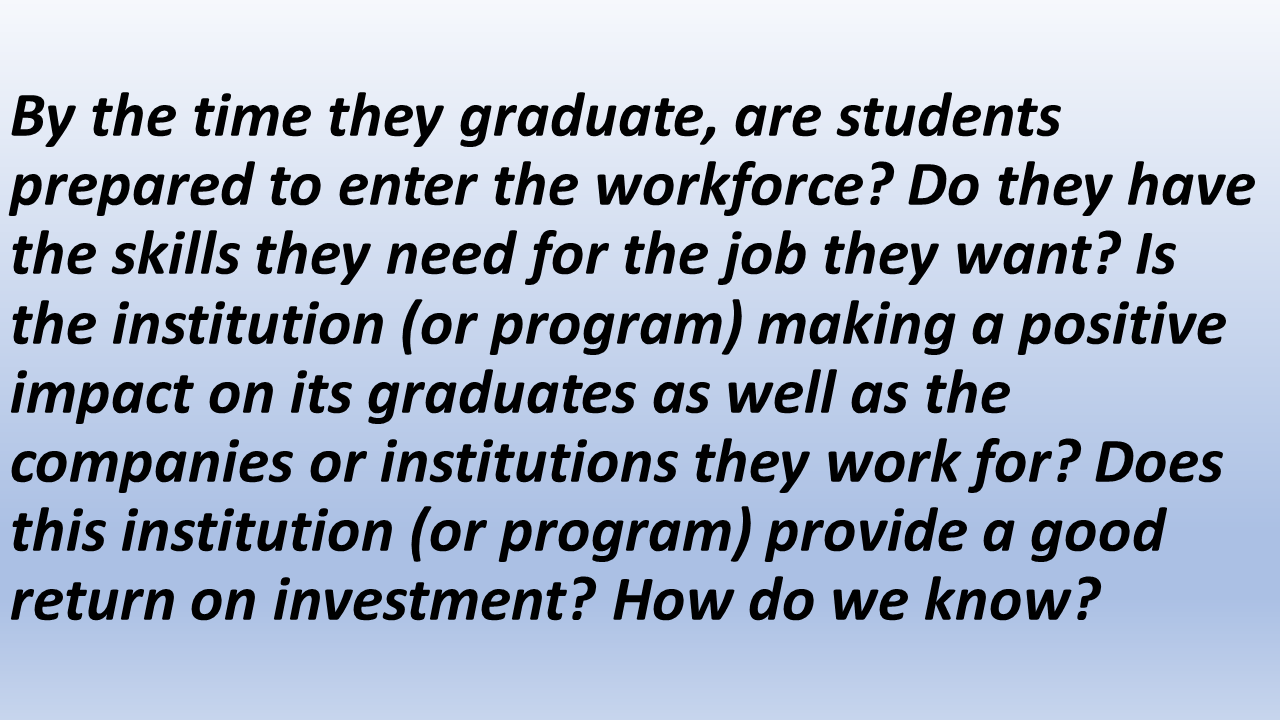In an educational landscape where scrutiny is high, academic institutions find themselves under the microscope, particularly in demonstrating their value to stakeholders. To address this, colleges and universities must articulate their commitment to preparing students for the workforce effectively. This involves not only showcasing career-focused outcomes but also ensuring a tangible return on investment. Metrics have become the tool of choice, allowing institutions to gauge success both at a macro and micro level.
From Classroom to Career
It’s so important for colleges and universities to show the academic community, as well as the public at large, that they provide good value for the money that students, donors, and taxpayers invest in them each year. One of the ways they do this is through career-focused outcomes. Higher education institutions must be able to answer questions like:

Career-Focused Outcomes Using a Macro vs. Micro Lens
Metrics like these are measured in various ways. An entire institution, for example, may view this through a broad lens, and may answer questions like these from a macro perspective. However, each academic program should be able to collect, analyze, and interpret data tailored to its specific area in order to answer the ROI question from more of a drilled-down, micro perspective.
Teacher Effectiveness and Positive Impact
In educator preparation, for example, one important indicator of a program’s quality can be found in the performance of its graduates, typically up to three years post-graduation. Teacher preparation program faculty and staff must look closely at a large number of performance indicators, two of which are teacher effectiveness and positive impact on student learning. These are related concepts, but they are not necessarily synonymous. Let’s break down the similarities and differences:
Similarities
- Focus on Student Outcomes: Both teacher effectiveness and positive impact center around achieving positive outcomes in students’ learning and development.
- Student Progress: Both concepts involve assessing and improving students’ progress, academic achievements, and overall growth.
Differences
- Teacher effectiveness: Typically refers to how well a teacher can facilitate learning and engage students in the educational process. It is often measured through various factors such as classroom management skills, instructional techniques, subject knowledge, and adherence to curriculum standards. Typical pieces of evidence for determining teacher effectiveness often include peer observations, principal evaluations, a review of teaching methods, lesson plans, and classroom management practices.
- Positive Impact on Students: Involves not only effective teaching but also fostering a supportive and motivating environment that contributes to students’ personal and academic growth. It goes beyond traditional academic metrics and may include factors like students’ social-emotional development, critical thinking skills, and overall well-being. Evidence for positive impact can include student testimonials, changes in behavior or attitudes, academic improvement, and long-term success beyond the classroom. Another way schools and states try to determine positive impact comes from value-added data, which involves measures that typically focus on quantifying the specific contribution a teacher makes to students’ academic achievement, often measured through standardized test scores.
Conclusion
It is very important for higher education institutions to create a well-balanced schema for answering questions related to job preparation, positive impact, and overall return on investment. They must collect and analyze data from a variety of internal and external high-quality assessments. It’s about tracking results over time and making informed decisions with a commitment to continuous improvement.
In essence, the pursuit of showcasing career-focused outcomes is a collective effort that involves the institution as a whole and each academic program individually. By embracing a holistic perspective and delving into program-specific metrics, colleges and universities can not only provide answers to pertinent questions, but also demonstrate their unwavering commitment to delivering value in the evolving landscape of higher education.
###
About the Author: A former public school teacher and college administrator, Dr. Roberta Ross-Fisher provides consultative support to colleges and universities in quality assurance, accreditation, educator preparation and competency-based education. Specialty: Council for the Accreditation of Educator Preparation (CAEP). She can be reached at: Roberta@globaleducationalconsulting.com
Top Photo Credit:

